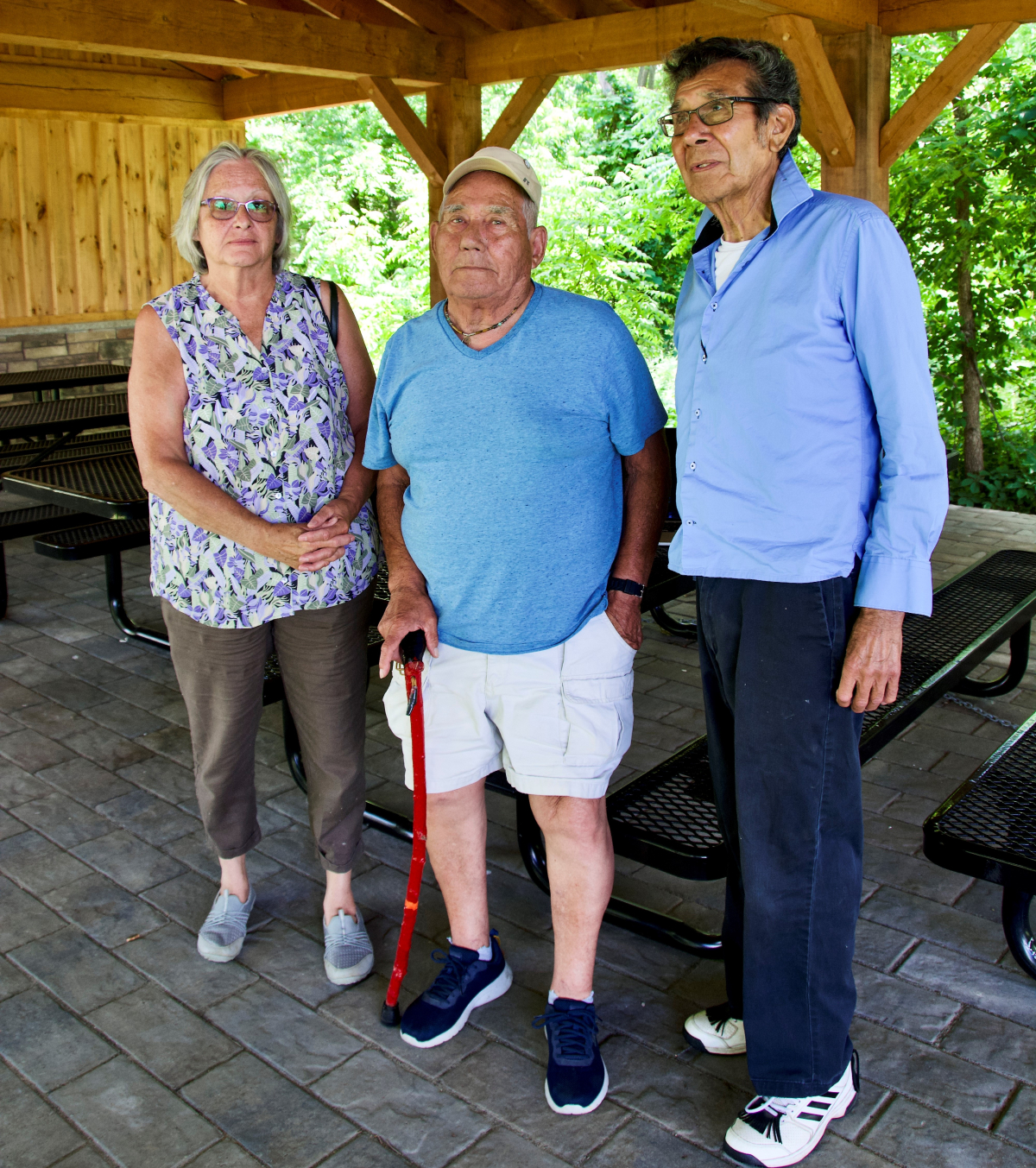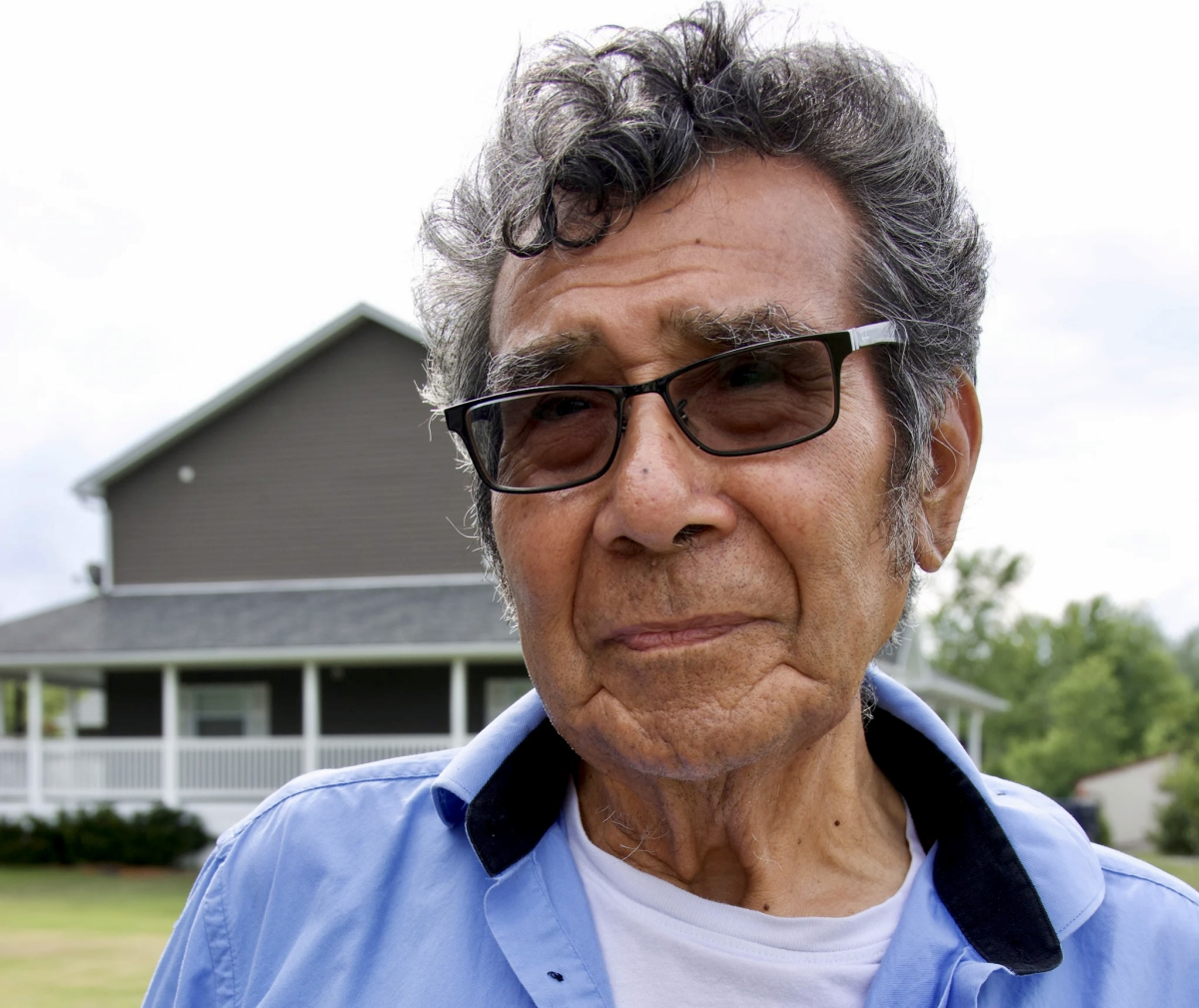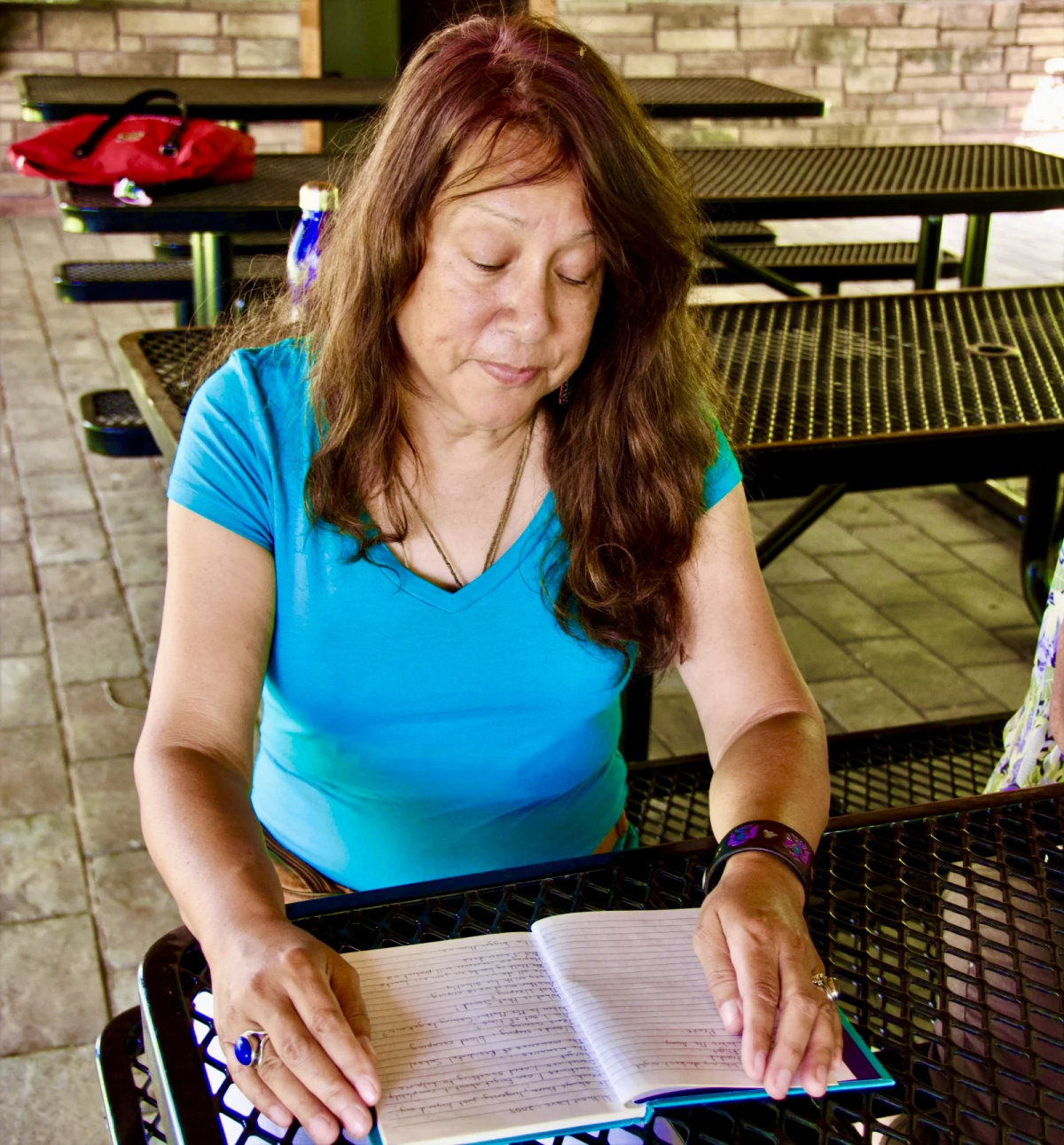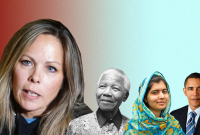Shelley Clark’s mother is a survivor so emotionally scarred, she still cannot speak about what happened to her at the Mohawk Institute Residential School. So Shelley, who is Cayuga from Six Nations of the Grand River Territory, knows little of her mother’s history except that she attended the school in the 1940s or early 1950s.
Like so many intergenerational residential school survivors, Shelley says her mother’s experiences have impacted her own life. She’s long imagined what her mother must have gone through, even writing a poem for her that’s told through the eyes of a child attending the former institute.
I tell myself I don’t care that I feel disconnected,
I tell myself that I don’t care that my spirit feels inadequate,
I tell myself that I don’t care that I began my life without love
Somewhere deep I know it’s a lie
The poem memorializes and honours the child who endured that history, but also tries to understand and move on.
It’s a burden and a difficult balance. How to preserve the truth of the past, teach its lessons, and yet somehow move forward and heal.
Over the past two years, the discovery of more than 2,000 unmarked graves on the grounds of former residential schools across Canada has brought all these tensions to the fore. Although the Mohawk Institute was run by Anglicans, many of the schools were operated by the Catholic Church, leading to a recent apology to survivors from Pope Francis. With the Pope’s visit to Canada now less than two weeks away, the question of how to honour former students without retraumatizing them is very concerning.
People are now hearing the truth about the schools, said Roberta Hill, who is from the Mohawk Nation and a survivor of The Mohawk Institute. “And it was causing a lot of trauma. It's retraumatizing people, you know, our survivors, our families, our communities.”
At Six Nations, much of that burden and balance of remembering the past without causing further damage to survivors and their families revolves around the old school.
The formidable three-storey, red brick building with its white porch sits at 184 Mohawk Rd., in Brantford, Ont., on Six Nations of the Grand River Territory. With its long entrance, huge trees and expansive grass lawns on either side of the driveway, it almost looks like an estate or a private school.
The former school sits well back off the road, so if you’re not looking, you could easily drive right by it and not even know it is there. Many non-Indigenous residents of the area have done that for years, some have no idea what it is or was. But to residents of Six Nations, it is infamous.
The Mohawk Institute: ‘Mush Hole’
Officially, the building has a grand title: The Mohawk Institute. But to the hundreds who went there, it was known as the “Mush Hole,” referring to the poor-quality porridge they received for breakfast and dinner five days a week.

Dawn Hill, a former elementary teacher who attended the Mohawk Institute from 1957 to 1962, remembers the school this way: “I think the biggest thing was that there was no love. There was no caring people, like the people who are supposed to be looking after, listening, taking care of our welfare. I don't think they give two hoots what happened to the children here.”
The school as it stands today is not the original building constructed by the New England Company in 1834. The existing building went up in 1904 after two previous structures were burned down by students. Despite the fires, the Mush Hole endured, becoming the longest-running residential school in Canada. This last version of the institute, still standing, finally closed in 1970.
Six Nations debate what to do with residential school buildings
At Six Nations, as in many Indigenous communities, there has been a debate about what to do with these old buildings. Some survivors of the Mush Hole would like to see the institute burned down one last time. They say it conjures memories that are too painful and they don’t want a reminder. They wouldn’t be the first. Other communities have done precisely that — set the old residential schools on fire, gathered in a circle and watched the building burn to the ground.
Ultimately, when ownership of the Mush Hole was transferred to Six Nations in the 1970s, the nations decided to let the building stand. The institute became the Woodland Cultural Centre, with a library, museum, art gallery, performance area, virtual tours and offices for staff.
Part of it is being preserved and restored as a museum in a campaign called Save The Evidence that aims to build an interpretive centre that preserves the history of residential schools in Canada, the experiences of survivors, and the intergenerational impact of the residential school system.

That history is important to 86-year-old Geronimo Henry, who was placed in the Mush Hole at the age of five. The former ironworker from Cayuga Nation spent the next 11 years there, from 1942 to 1953. Geronimo founded Lost Generations, a support group for survivors in 2001. He was also the first Six Nations person to file a lawsuit against the federal government and churches in 1998.
Geronimo had the number 48 tattooed on his hand, the number he was assigned in place of his name, as a reminder of how he was treated at the school and as a way to hopefully show others.

“I figured if I could ever meet the prime minister [and] shake his hand … he would see this number 48 survivor and, you know, ask me about going, you know, about the tattoo. So I could tell them about all the stuff, all the abuse we endured as well,” said Geronimo.
Locked in a small, dark pantry at Mush Hole
Another Mohawk survivor, John Elliott (1947-1952), a now-retired bridge and interior painter, still recalls how he was bullied by older boys at the Mush Hole and repeatedly ran away. For that, he was punished by being locked in the small, dark pantry at the bottom of the staircase, sometimes for up to two days without food, water or anywhere to sleep. Yet, John somehow finds a way to smile and laugh. “Yeah, but see, I can laugh … because they couldn't really hurt me that much.”
The Mohawk Institute’s long tentacles and government policies affected more than the school's attendees. For instance, when my father was very young, his family moved him away from his home on the Six Nations Reserve and sent him to live with relatives in the U.S., so he would not have to attend the Mush Hole. When he returned to Canada, he never came back to the reserve and didn’t want anyone to know he was Native. Like many Indigenous people at the time, he hid his identity by pretending to be anything but Indian.
Ironically, years later when I was looking for a place to locate my audio/video business, someone suggested I try the Woodland Cultural Centre, located in the institute, or Mush Hole. I spent over 12 years in that building with my business. It was an experience I will never forget and had I known then what I know now, I may have never set up there in the first place.
The ‘lingering gloom’ pervades Mush Hole
While working at the building, I definitely felt the presence and heaviness in that structure. Many times it felt like someone was watching me from over my shoulder and other people working in the building reported similar experiences. It is the kind of thing you never get used to or discount but definitely respected where and why it was happening.
Over the years, some of my clients who were former students had a hard time entering the building. It wasn’t just their bad memories, but also the lingering gloom, the smell and the eerie feeling you get walking the halls and in the rooms. Survivors and intergenerational relatives understand immediately.
“Well, they're afraid. Many of them died in fear. There's an overlying energy of shame, it permeates the walls and then the materials in the walls and a lot of the spirits are afraid to move on,” says intergenerational survivor Shelley Clark, who attended Geronimo’s support group in 2002 to reconnect with her community and culture.
Honouring the children at former Mohawk Institute
Ground-penetrating radar is currently scouring the huge acreage that surrounds the former Mohawk Institute looking for evidence of unmarked graves. It will take years to complete, but even as this is being done, a slow transition of the grounds is starting to take shape — one that will honour the children who never left and the survivors who may choose to revisit the site. It will give visitors, survivors and their families a buffer zone to reflect.

Called the Mohawk Village Memorial Park, it was established around 2015 after several survivors approached the elected council on Six Nations and were granted a resolution for a five-acre park on what has become community lands of the former institute. The idea arose from survivors Roberta Hill, Dawn Hill, John Elliott and intergenerational survivor Shelley Clark, among others, who wanted a way to take back the space and do something positive for survivors.
“As survivors, we kind of just gathered and said: What can we do? We know what happened. We know the truth. So we thought: Well, let's just put a little memorial in here.” — Roberta Hill
“We wanted something that was really, really positive. Someplace that was peaceful, someplace where we could honour the children, and that's what our park is about.” — Dawn Hill
At first, they contemplated a garden, but the idea blossomed into a park.
“When you're coming here, you need a buffer because when you drive up that long laneway, immediately those feelings are going to be activated, right? And you need that buffer. And then when you take the tour, you need a place to debrief as well. So it's really actually essential to have the park so people can sit and reflect ... because I've seen lots of people coming here and they break down and there's no place to go, right?” — Shelley Clark
Now with a pavilion and circle area complete, they have set their future goals on raising the $5 million needed to complete the park. They’ve started their own fundraising efforts and have a concept video with ambitious ideas on how to further transform the grounds.
Pope Francis visit not a resolution for survivors
Pope Francis will not visit Six Nations during his Canadian tour.
According to an itinerary released by the Canadian Conference of Catholic Bishops, the Pope will begin his visit in Edmonton and at the nearby community of Maskwacis, then travel to Lac Ste. Anne, Alta., a pilgrimage site for First Nations and Métis Catholics. From there, he will go to Quebec and Nunavut. Pope Francis did apologize to survivors this spring from the Vatican, and a number of survivors hope he will apologize again during this visit.
For the survivors who are leading the memorial project, the Pope’s visit or an apology on Indigenous homelands is not the resolution they are looking for — they want concrete ways of helping survivors.
“We didn't want him here because … we didn't want just another photo op,” said Dawn Hill.
“The damage has been done in the past. Pain is still here and I think that we're just in a better place to say: 'Here's what we want moving forward.' It's survivors saying we don't want to be stuck in the past,” said Roberta Hill. “So I think now that we have the concept, it's time for the government to come forward and, you know, help us out as part of the reconciliation process.”
In addition to their work with the Mohawk Village Memorial Park, Roberta Hill, Dawn Hill, Geronimo Henry and John Elliott are also board members of the Survivors Secretariat that was established in 2021 to help efforts to document, share and uncover the truth about what happened at the Mohawk Institute.
Lastly, Geronimo continues to push forward with his GoFundMe effort called Geronimo’s Dream to build a monument for those like him who suffered the same experience that he did and for those who continue to suffer. At the time of this article's publication, his goal of raising $50,000.00 had been exceeded — $58,452.00. Donations can be made here.






Comments